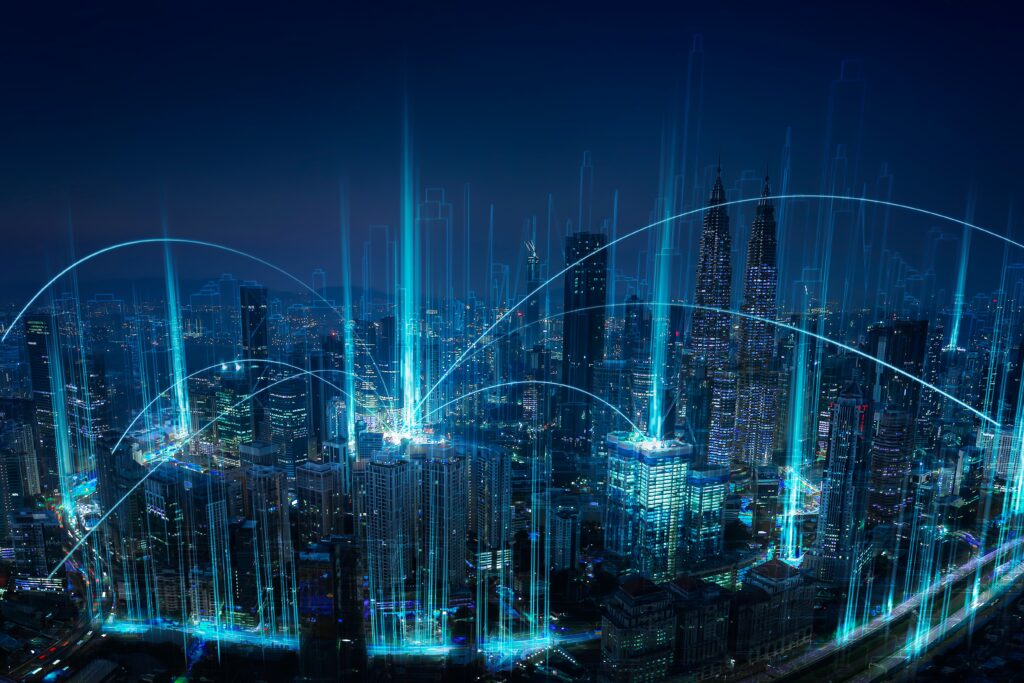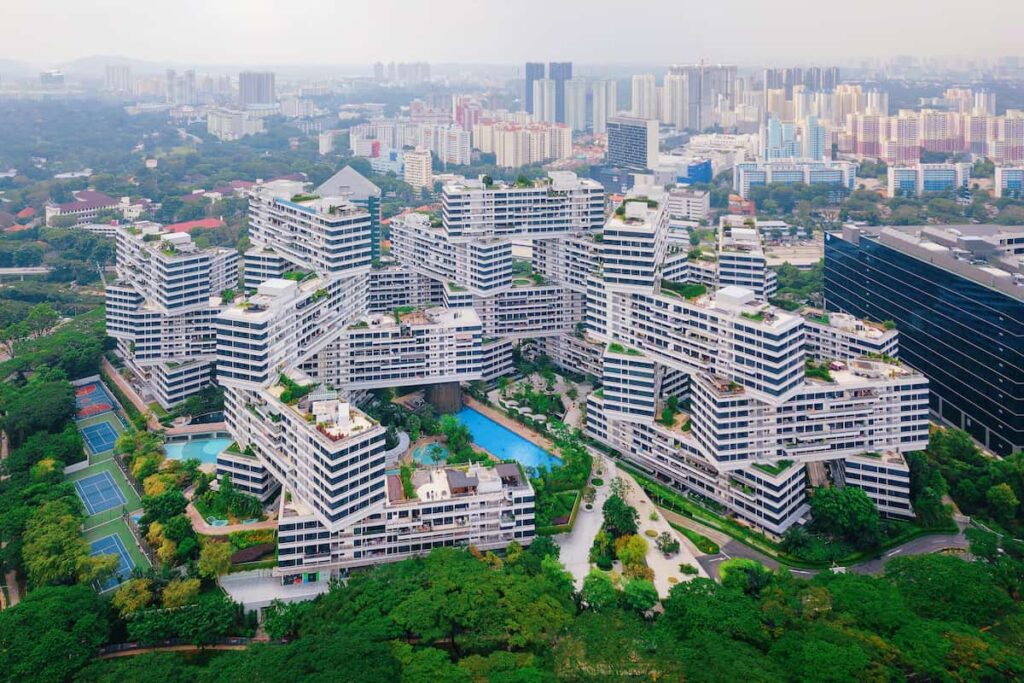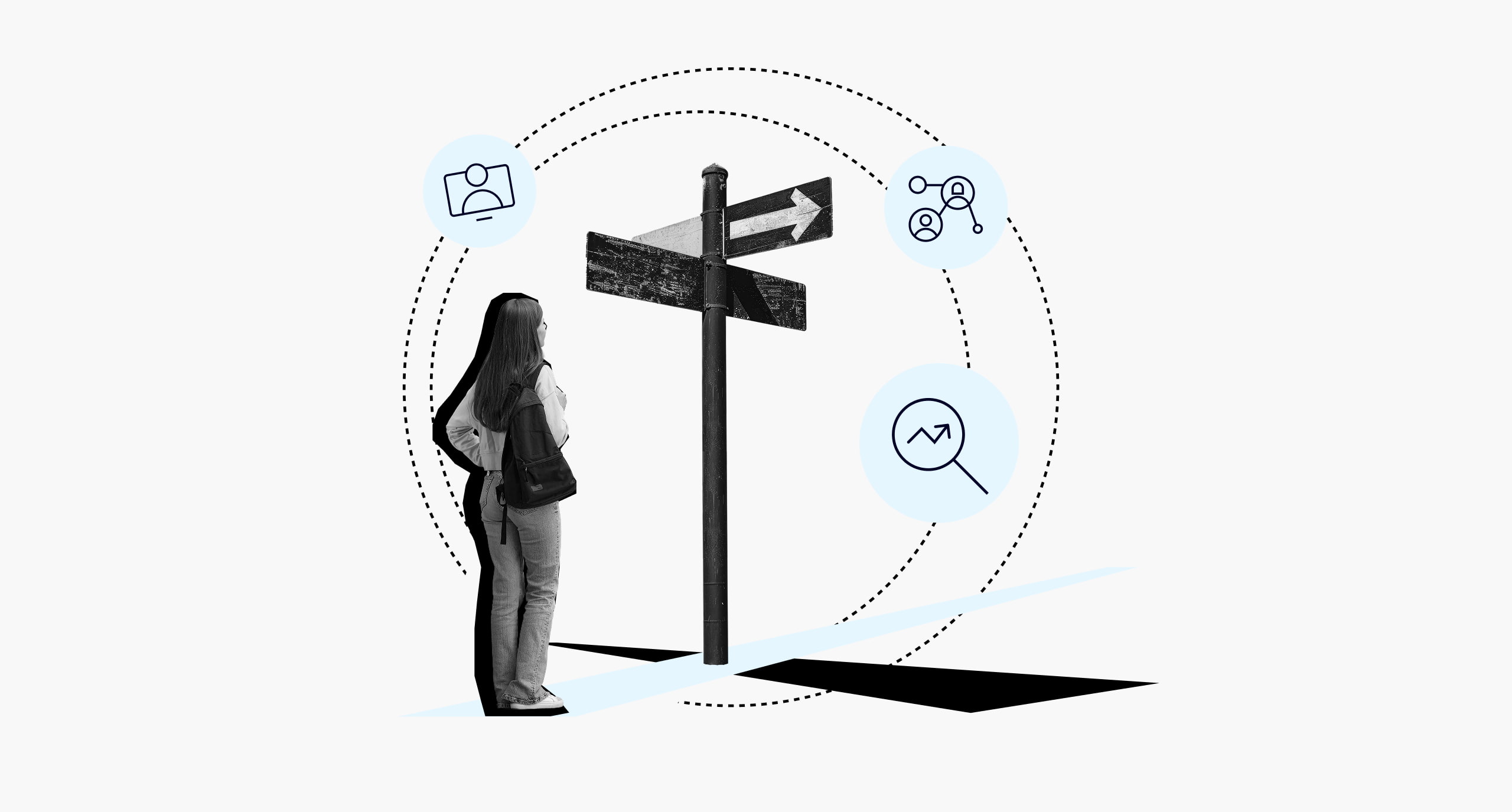The world is shifting towards urbanization. By 2050, that could mean 68% of the world’s population living in cities. And to facilitate this change, governments are developing cleaner, safer and better-functioning spaces through smart city infrastructure.
It’s now a core topic for any top architecture school. However, if you’re not yet enrolled at IE School of Architecture & Design, here’s a look at what the future holds.
What is smart city infrastructure?
There are various aspects to smart city infrastructure. Physically, it’s the buildings, vehicles and layout that allow superior function. If designed well, the infrastructure optimizes telecommunication, modern healthcare facilities, transportation networks and urban planning.
Smart city infrastructure also includes non-tangibles alongside the physical, such as digital networks and data. Smart cities use this technological integration to boost sustainability and high quality of life. For example, residents of a smart city should benefit from efficient delivery or easy access to healthcare. Sustainability records should match reduced traffic congestion with better air quality. And responsive technology alongside physical layout makes this possible.
Smart city infrastructure integrates all of these features in a way that’s scalable and adaptable.

What’s more, a well-designed infrastructure is easily maintained. It’s all about efficiency—the foundation for a smart city’s success and long-term investment lies in the solidity of its infrastructure.
How does technology enhance smart city design?
Smart cities depend on new-age technology. But what are the core infrastructure elements of a smart city? Let’s take a look.
Internet of Things (IoT)
This is the network of physical devices, vehicles and appliances that carry smart technologies. By interconnecting data from their sensors and software, “smart objects” help decision-makers optimize the overall functionality of a city. The interconnectedness of smart objects ranges from home appliances to transportation systems.
Information & Communications Technology (ICT)
While IoT is the network of physical objects, ICT is the technological network that keeps smart cities functioning. This owes to its processing and exchange of data, including all the other functionalities in between: storage, representation, security, management and more.
Automation
Automation mitigates the need for human activity on daily tasks. Smart cities use automation to respond quickly to real-time data, with uses like motion-activated streetlights. As such, automation leads to energy efficiency while also improving the quality of life for inhabitants.
Artificial Intelligence (AI)
Alongside automation, Artificial Intelligence enhances smart cities by reducing dependence on moments of menial human decision-making. AI algorithms can be used to optimize waste collection routes, or help law enforcement by analyzing data from security cameras to detect crime.
How do smart cities balance sustainability and technology?
Orchestrating infrastructure for sustainable smart cities is vital. To do so, sustainability and technology should work in perfect unity. This balance is achieved through optimizing resources to reduce environmental impact.
Here are several technological applications that already exist in smart city infrastructure:
1. Smart grids to optimize energy consumption and distribution, thus reducing waste and promoting renewable energy sources.
2. Environmental monitoring systems that use sensors and data analytics to track air and water quality, noise levels, and other environmental factors.
3. Smart transportation systems that include automated vehicles, intelligent traffic management systems and electric vehicle charging infrastructure to reduce congestion and emissions.
4. Blockchain technology to boost transparency in waste management, supply chains and energy grids.
5. GIS (Geographic Information System) to help urban planners with integration of green spaces and alleviating urban heat island effects.
In essence, all of these technologies work together to have real-world effects in smart cities. For example, in the case of smart transportation, you’re seeing an interplay of IoT, automation, AI and ICT that offers rapid analysis of data to help ease traffic congestion. This in turn reduces carbon emissions and improves quality of life for residents.
What role does design play in smart city development?
Human-centered design plays a central role in the development of smart cities. It does so by engaging citizens when solving complex urban issues. This citizen-centered methodology revolves around a four-step process: empathy, ideation, prototyping and testing.
It’s a proactive smart design approach that encourages innovation, with cities like Singapore and Barcelona using it to create more livable and responsive urban environments.

Design also intersects with systems thinking. This is a holistic framework that seeks to understand interdependencies in urban systems. It’s true that systems vary: some focus on objective, data-driven modeling, while others emphasize subjective, community-based knowledge creation. However, by combining human-centric design with analytical insight, organizers of smart cities can solve problems creatively, all while empowering their citizens to engage with their broader community.
These participatory design systems result in smart urban developments where digital tools enable inclusive dialogue, shared decision-making and co-created futures.
What are examples of smart city infrastructure?
The 2024 Smart City Index used resident surveys and infrastructure data to rank 142 international cities. This year, seven of the top ten smart cities were in Europe: Zurich, Oslo, Geneva, Copenhagen, Lausanne, London and Helsinki. All serve as great reference points for how smart city infrastructure is being pioneered across Europe.
It’s interesting to note that Europe remains dominant in the rankings. Asia, however, is making notable progress. Singapore now ranks 5th, maintaining its long-standing position in the global top 10. Other high-performing Asian cities include Beijing (13th), Taipei City (16th), Seoul (17th), and Shanghai (19th).
Taipei City’s economic growth took it to NT$18 trillion in business sales for 2024, along with an active commitment to promoting sustainable development.

North America has consequently seen a decline in rankings. No North American city made the global top 20, with its highest-ranking cities being New York City (34th), Boston (36th) and Washington DC (50th). Cities like Washington DC, Denver and Los Angeles have dropped by more than 10 spots year-over-year, which indicates difficulties in adapting smart infrastructure demands.
The report says that smart city infrastructure must now go beyond a focus on technology, with more initiatives around human-centric design and good governance.
Design the future with IE School of Architecture & Design
Looking to become a licensed architect in Spain or the EU? Our Master in Architecture will prepare you to lead the global profession. With a strong foundation in sustainability, smart technologies and design innovation, we’ll give you the tools and mindset to make a real impact.
Topics like sustainability and smart city development are core in our teaching methodology. From cutting-edge digital fabrication to strategies that address climate, equity and livability, you’ll learn how to design for today’s urban challenges.
With small class sizes, personalized mentoring and access to a global network of architects and innovators, this program is built for forward-thinking professionals like you. So, what are you waiting for? Follow the link below and start designing a smarter, more sustainable future.
Learn about smart cities and infrastructure with the Master in Architecture
See how IE School of Architecture & Design can transform your skill set.

Benjamin is the editor of Uncover IE. His writing is featured in the LAMDA Verse and Prose Anthology Vol. 19, The Primer and Moonflake Press. Benjamin provided translation for “FalseStuff: La Muerte de las Musas”, winner of Best Theatre Show at the Max Awards 2024.
Benjamin was shortlisted for the Bristol Old Vic Open Sessions 2016 and the Alpine Fellowship Writing Prize 2023.






